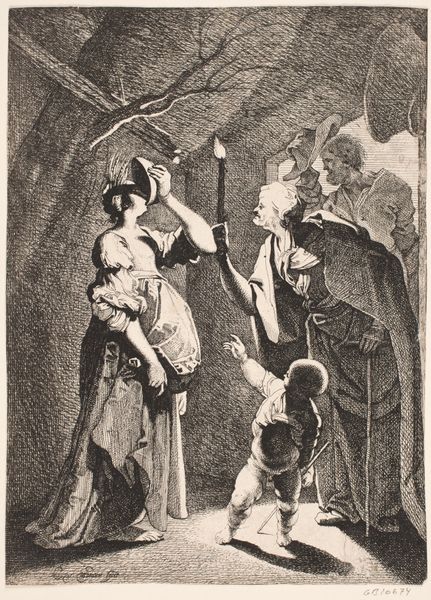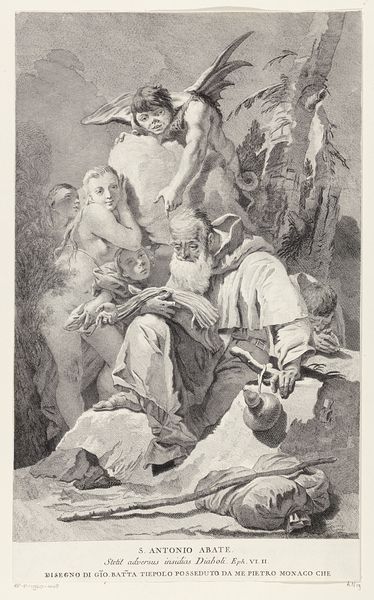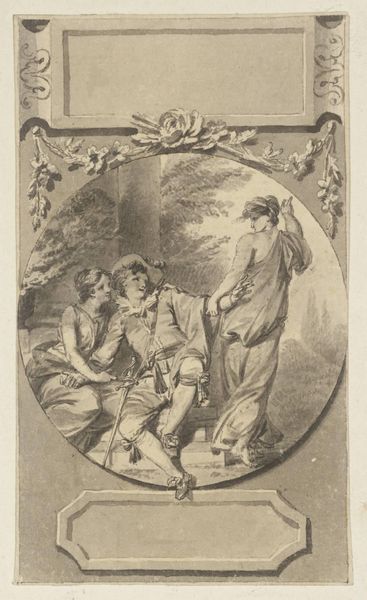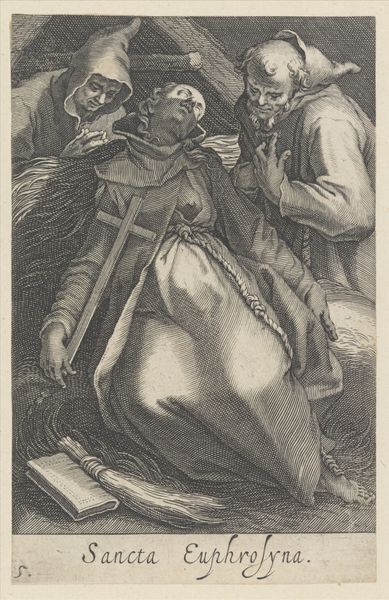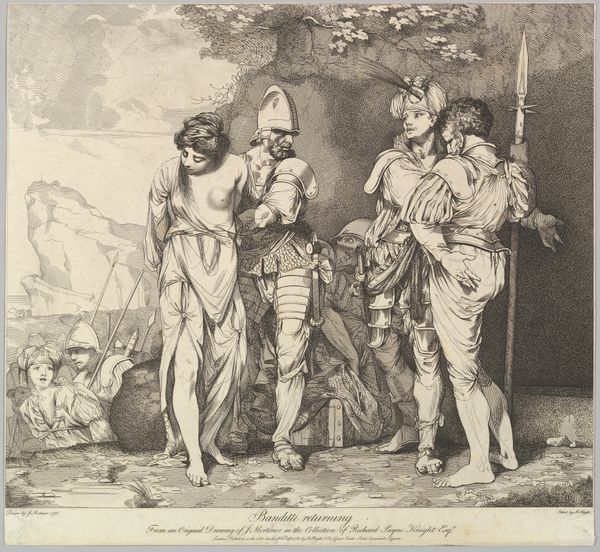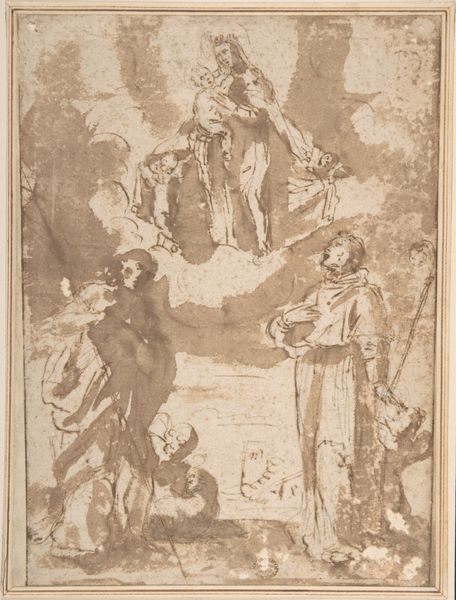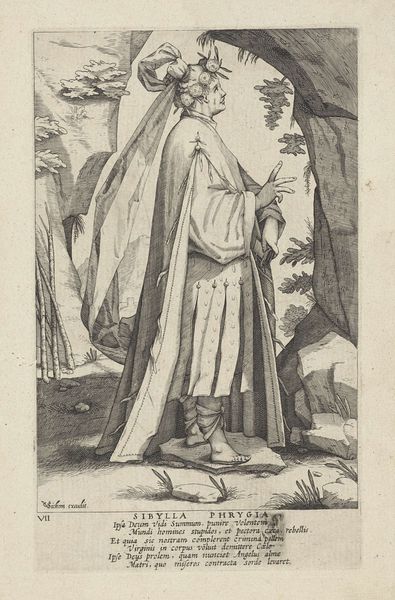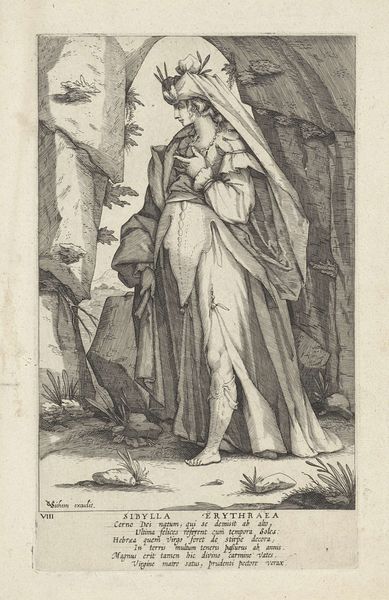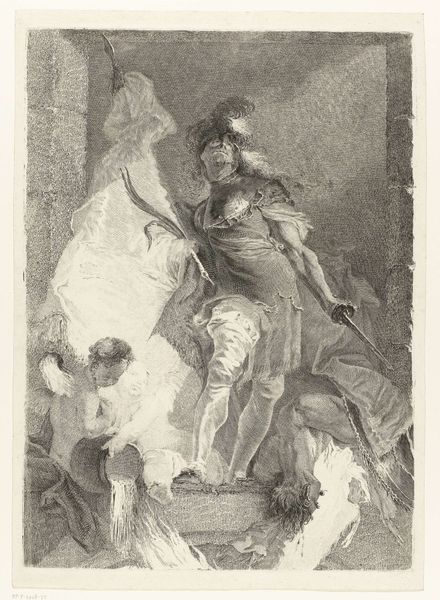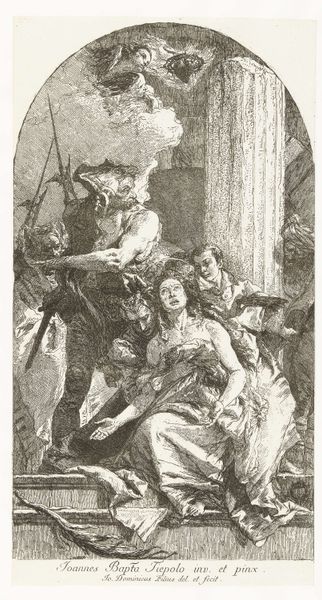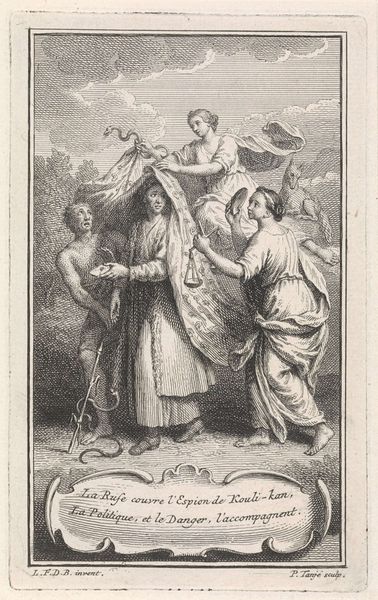
drawing, print, etching, engraving
#
drawing
#
allegory
# print
#
etching
#
history-painting
#
academic-art
#
engraving
Dimensions: sheet: 3 3/8 x 2 1/8 in. (8.5 x 5.4 cm)
Copyright: Public Domain
Curator: This is an 18th-century etching and engraving titled "Magna Carta." The artist is unknown, and the print is part of the Metropolitan Museum of Art's collection. Editor: My first impression is that it’s surprisingly stark, even severe. The grayscale palette feels almost… urgent. The figures seem caught in a pivotal moment, but I’m not sure what’s going on exactly. Curator: It depicts an allegorical scene referencing the historical significance of the Magna Carta. Notice how the central figure, a woman personifying Liberty, receives the document from the Barons. Editor: Ah, Liberty! I see it now. But the presentation feels… performative. Like they’re staging history for posterity, with very deliberate hand gestures. Given the period, are we looking at a commentary on power, or a romanticized depiction that glosses over uncomfortable realities of the time? Curator: Absolutely, that tension is central. This was created during a period of significant political upheaval, where the ideals of liberty and the rule of law were intensely debated. Prints like these played a vital role in disseminating political ideas, often crafting a specific narrative around historical events like the signing of the Magna Carta. Consider its audience – who would have owned this print, and what political arguments might it have supported? Editor: That's exactly where my mind was going. It strikes me that we see a rather romantic, almost naive perspective of law. Considering this comes out of the 18th century and European aristocratic culture, did these ideas of Liberty ever truly trickle down to benefit all people, especially colonized peoples or enslaved communities? Curator: That's the crucial question. We must ask how accessible these "rights" truly were and whom they were meant to serve. Even while championing "liberty," European societies were actively engaged in practices that directly contradicted those ideals, reinforcing the established social and power structures of the day. Editor: Right. This piece definitely compels me to consider the complexities inherent in translating historical moments into visual narratives and to really think about the blind spots such representations can create. Thanks for providing context about the print’s intended political arguments and considering this work through the lens of contemporary sociopolitical implications! Curator: Indeed. Analyzing its historical role alongside its modern reception offers an interesting reflection on our continuing struggle with the very concept of liberty.
Comments
No comments
Be the first to comment and join the conversation on the ultimate creative platform.

